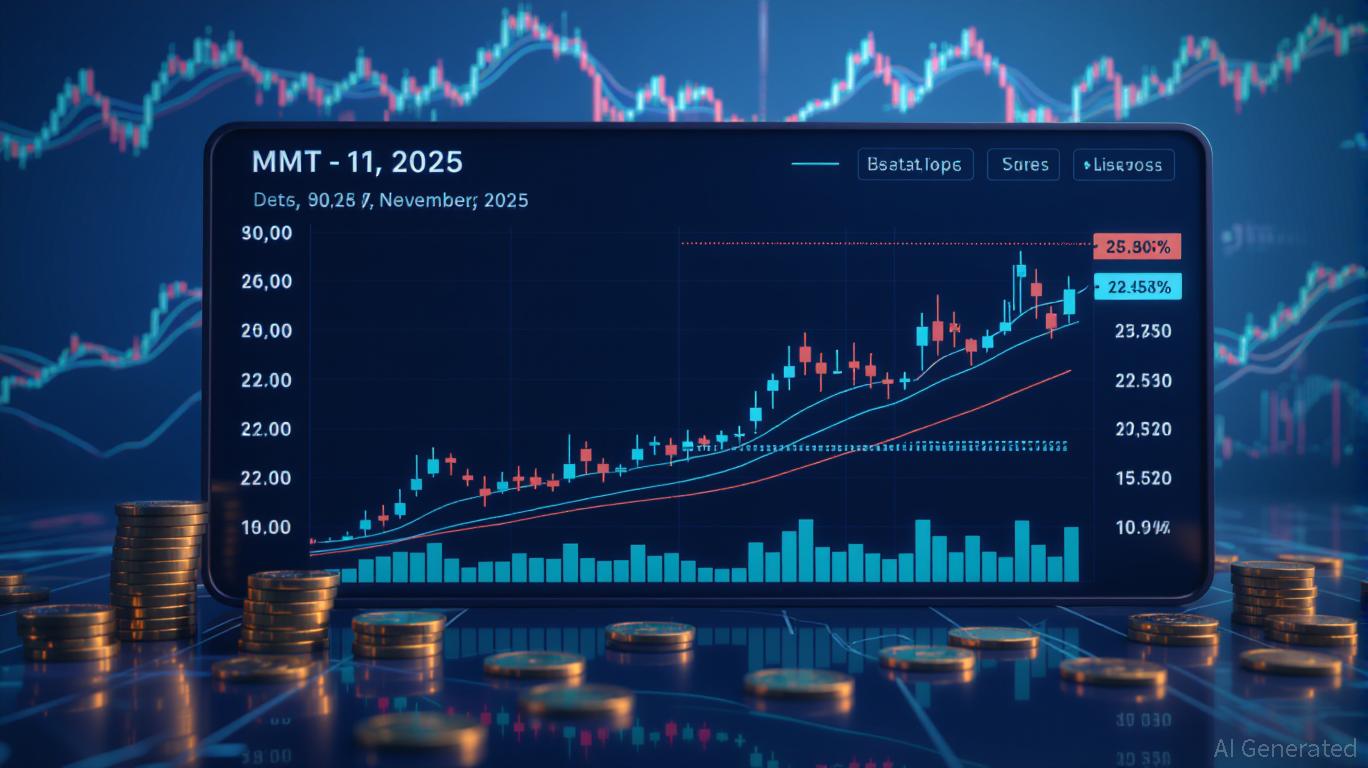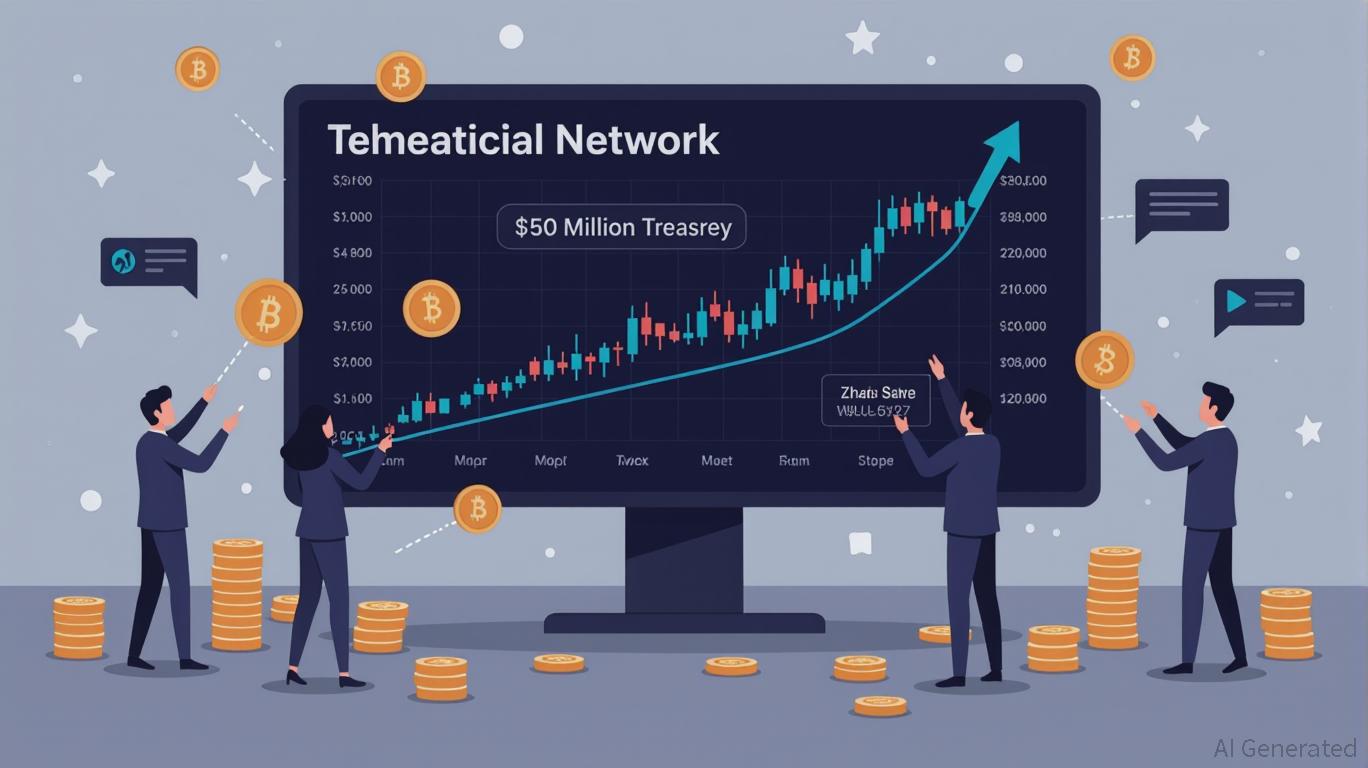MMT Value Forecast and Investor Outlook for November 2025: Evaluating Reliability During Economic Changes
- MMT token surged 1,300% in Nov 2025 due to Binance listings, airdrops, and institutional investments. - 1607 Capital increased MMT-linked fund stake by 84.7%, but dividend sustainability remains unclear. - Fed policy and missing inflation data (due to 2025 government shutdown) cloud macroeconomic alignment. - MMT's volatility ($4.40 to $2.54) highlights speculative nature despite structural catalysts. - Long-term credibility depends on macroeconomic clarity and Fed policy shifts, not just exchange-driven
Structural Catalysts: Listings, Airdrops, and Institutional Stakes
MMT’s rapid ascent in late October and November 2025 was primarily triggered by its debut on Binance, which
Institutional backing further enhanced the token’s attractiveness.
Macroeconomic Context: Fed Policy, Inflation, and Data Gaps
The Federal Reserve’s policy direction in late 2025 significantly influenced market outlook. With U.S. 10-year Treasury yields near 4.16%,
Modern Monetary Theory (MMT) itself has shaped discussions on fiscal and monetary policy. Supporters claim deficit spending can drive economic growth, while critics caution about inflation risks,
Market Volatility and Sentiment Analysis
Blockchain data highlights MMT’s pronounced volatility: the token climbed to $4.40 in late October 2025 before dropping to $2.54, with $109 million in futures positions—mainly shorts—being liquidated during the downturn. This dramatic movement highlights the speculative aspect of the token.
Nevertheless, the lack of macroeconomic data in November 2025 casts doubt on the token’s long-term legitimacy. Without dependable inflation statistics, investors have little basis to judge whether MMT’s valuation is grounded in economic reality or simply reflects exchange-driven liquidity and airdrop incentives.

Credibility Assessment: Structural Strength vs. Macroeconomic Uncertainty
Although MMT’s price rally is closely linked to exchange listings and institutional support, its connection to macroeconomic indicators is still uncertain. The token’s dependence on airdrop rewards and yield-focused tactics—rather than organic demand or alignment with economic fundamentals—points to a high level of short-term speculation. Additionally, the absence of official inflation data in November 2025 leaves investors unable to accurately compare MMT’s performance with broader economic patterns.
To establish lasting credibility, MMT must show consistent distributions and the ability to withstand changes in Federal Reserve policy.
Conclusion
The MMT token’s surge in November 2025 was primarily driven by structural factors—exchange listings, airdrops, and institutional involvement—rather than underlying macroeconomic strength. While these elements have fueled short-term appreciation, the token’s long-term viability depends on greater macroeconomic transparency, which is currently hindered by the government shutdown and missing data. Investors should remain cautious with MMT, weighing its speculative appeal against strategies that hedge against inflation or diversify risk.
Disclaimer: The content of this article solely reflects the author's opinion and does not represent the platform in any capacity. This article is not intended to serve as a reference for making investment decisions.
You may also like
Ethereum Latest Updates: Major Institutions Support Ethereum's Supercycle, While Technical Experts Raise Concerns
- Tom Lee predicts Ethereum's "supercycle" driven by institutional adoption and DeFi growth, sparking market debate over valuation risks. - SharpLink Gaming's 1,100% revenue surge and $200M ETH allocation to Linea highlight bullish institutional strategies amid price volatility. - Technical analysts warn ETH's $3,500 support is critical after breaking below key channels, with $37B daily volume reflecting mixed momentum. - Growing institutional demand contrasts with critics' concerns over centralization ris

The Rapid Rise of ZEC (Zcash) Value: An In-Depth Technical and Strategic Analysis
- Zcash (ZEC) surged 66.55% in November 2025, peaking at $683.14, driven by treasury initiatives, privacy innovations, and institutional investments. - Cypherpunk Technologies' $50M treasury and Zashi Wallet's privacy swaps boosted demand, while Winklevoss Capital and Grayscale added $72.88M in institutional backing. - Technical indicators show overbought conditions (RSI 94.24) but bullish momentum persists, with derivatives markets holding $1.13B in open interest and a 1.06 long-to-short ratio. - Zcash's

ICP Caffeine AI's Rising Popularity: Ushering in a New Age for Blockchain Investors and AI-Powered DeFi
- Dfinity's ICP Caffeine AI bridges blockchain and AI in 2025, enabling non-technical users to build dApps via natural language prompts. - The platform saw 30% ICP token price growth and $237B TVL in Q3 2025, but faced 22.4% dApp usage decline amid market saturation. - Investors prioritize infrastructure projects like ICP Caffeine AI for AI-driven DeFi scalability and security, contrasting with speculative token trends. - Regulatory scrutiny and user retention challenges persist, but enterprise adoption of

Internet Computer's Rapid Rise: Could This Signal the Next Major Change in Blockchain?
- Internet Computer (ICP) surged in 2025 via DeFi upgrades like Flux (scalability), Stellarator (sharding), and Chain Fusion (cross-chain interoperability with Bitcoin/Ethereum). - Q3 TVL spiked 22.5% to $1.14B, with ICP price rising 45% to $5.20, driven by institutional adoption of AI-tokenized infrastructure and 2,000+ new developers. - Despite growth, DApp engagement dropped 22.4%, highlighting a gap between technical advancements and user adoption, while $12B TVL losses from hacks in November 2025 pose
